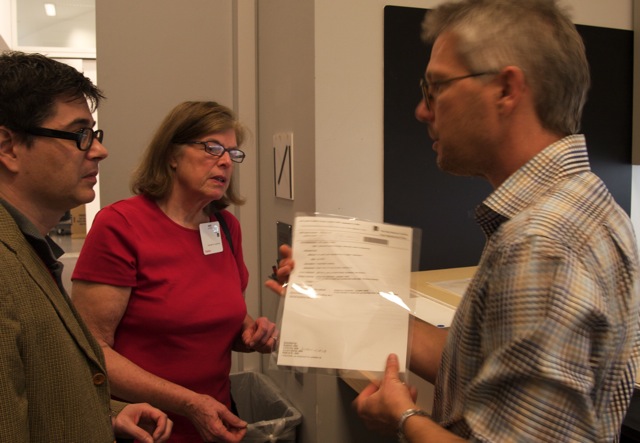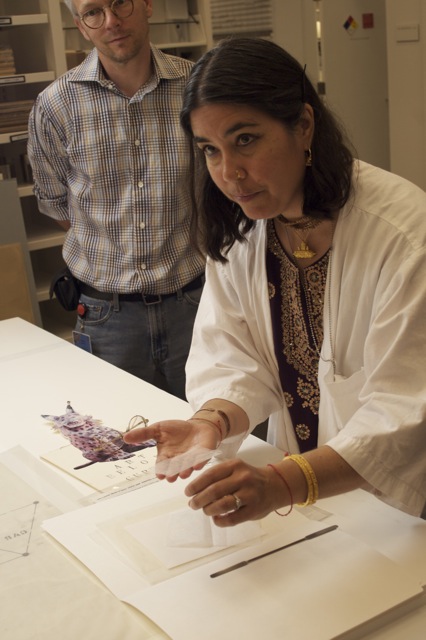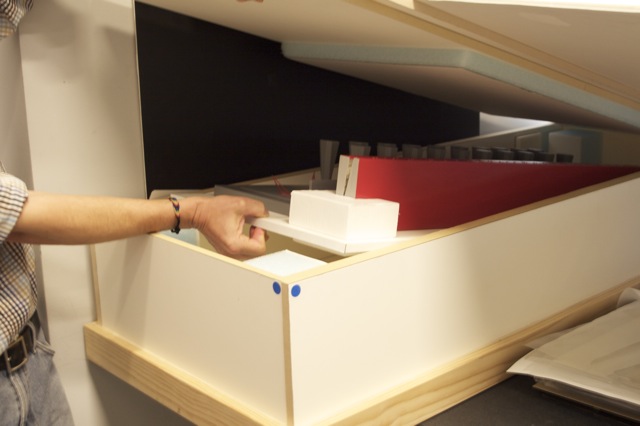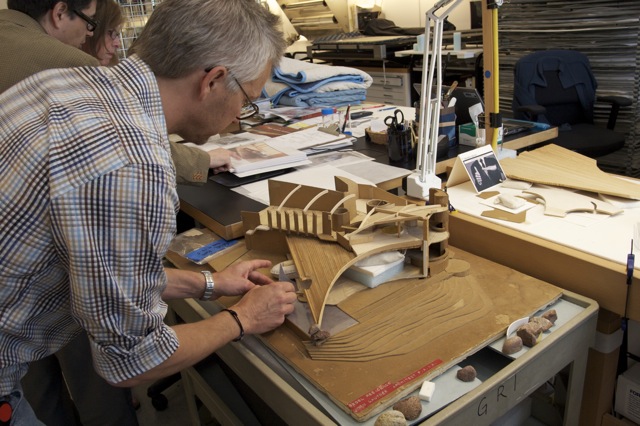In this issue: Hammer Exhibit Tours, Archive progress
Let us know what you think. Write to lautner@johnlautner.org with your comments.
Let us know what you think. Write to lautner@johnlautner.org with your comments.

John Lautner with Joanne Segel in Segel Residence; photo by Carla Larissa Fallberg
As part of the celebration of Between Earth and Heaven, the exhibit on John Lautner that opens at the Hammer Museum in Los Angeles on July 13, the Hammer is working with the Mak Center for Art and Architecture to offer tours of Lautner buildings. Two dates are now confirmed: July 27 and September 14. Only members of the museum (at the “Contributor” level and above) are permitted to purchase tickets, which go on sale June 16. More information on the tours will be available on the Hammer website (http://www.hammer.ucla.edu/exhibitions/139/) on June 6 and on the MAK Center website (http://www.makcenter.org). Space is limited.
Update: see News category for updated information on these tours.
As reported in previous newsletters, the Foundation is pleased to report that the Getty Research Institute has accepted the John Lautner archive and is in the process of preserving and cataloging the materials. Members of the John Lautner Foundation Board of Directors toured a part of the Getty Research Institute last April, to get an idea of the preservation process.

Albrecht Gumlich, head of the Lautner conservation effort, shows Frank Escher and Karol Lautner Peterson the record created for each item in the archive.
Karol Lautner Peterson, Christopher Carr, Frank Escher, and Judith Lautner met with Wim DeWit, head of Special Collections and Visual Resources, who then introduced the board members to Albrecht Gumlich, who is overseeing the preservation effort. Gumlich described and showed the group several of the methods in use for different types of materials and different challenges .

Conservation worker describes use of special paper for repairing tears and reinforcing corners.
The Getty Special Collections section includes specialists in many different aspects of preservation. Some work on original plans, some on models, others on photographs. The primary goal is to stabilize the material, which often means no more than eradicating insects and then preserving in special covers and cabinets in climate-controlled vaults. In the case of the Lautner models, decisions have to be made about how to repair damage and whether or not to replace faded color elements. When portions of a model are missing any replacement parts must be removable without affecting the original materials. Preservation appears to be an art as well as a science in this respect.

Gumlich displays the type box created for model preservation.

Gumlich describes the decisions that had to be made in the preservation of the Segel residence model.
Because of the detailed work that is being done on the extensive Lautner collection, it will be several months before the collection is available for research by the general public. When it is available, the Foundation as well as the Getty will announce it.
The models for the upcoming exhibit at the Hammer are being manufactured by Design Models of California, Inc, in El Segundo, California. The models will be built at the scale of 1″ = 1′, which is sixteen times as large as a typical (1/4″ = 1′) working architectural model. The large size allows a viewer to see into the model and more easily visualize the effect the building has on people inside. The large models were in various stages of completion when visited by the board in April.

Chad Takenaka displays the model of the chemosphere (Malin residence).
As with the restoration of models at the Getty Institute, the crew at Design Models had to make decisions along the way when constructing the large-scale models. Many copies of plans (as well as consultations with the co-curators) were used to help with these decisions.

Some of the many plans used in the construction of the models.


The Elrod Residence. Photo on right shows view of ceiling from inside.

A portion of the Mar Brisa residence in process.
One additional benefit to the use of several large models all at the same scale is that visitors will be able to compare sizes of homes easily.
Members of the Foundation are entitled to printed copies of the newsletter as well as various discounts and invitations to special events. Because of an agreement with the Hammer, the Foundation has been unable to offer special events during the time the exhibit is under development. After the exhibit opens, however, the Foundation will be able to offer an event, and intends to do so. Details will be in a future newsletter.